During our road trip to Sicily and Calabria in December last year, we have visited several amazing places at the Calabrian coast. Although tourism plays a major role in the economy of Calabria, this region is rather unknown in West European countries as a tourist destination. However, that does not apply to tourists from Northern Italy, who love the beaches and the warm climate during the summer months.
Hence, in wintertime we could enjoy both the authentic villages and picturesque mountain landscapes of Calabria. The coast was calm and quiet, the nature was green and bright – even in December.
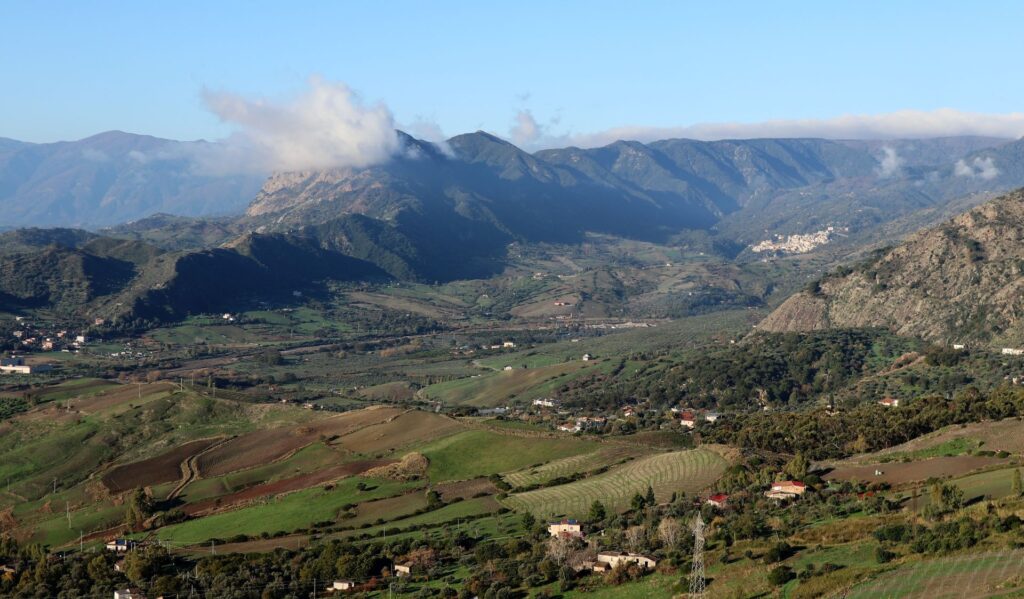
It felt good to explore this magnificent region without crowds and traffic jams, with warm sunny weather and reasonable prices!
Among the towns and villages we visited, three places left an outstanding impression on us: Gerace, Scilla and Pizzo. Let me tell you more about them:
GERACE
We visited Gerace, as it is included in the list of „The most beautiful villages in Italy“ and it has probably the most interesting historical center in Calabria.
The name Gerace derives from a Greek word meaning „sparrowhawk“. In fact, according to legend, a sparrowhawk indicated the exact place where to build this village; it had to be a place far away from Saracen attacks by the sea. Founded in the 9th century, in the Byzantine period, it has experienced several dominations.
Gerace lies at an altitude of 500 m on a sand cliff rock above the Ionian Coast and it has only around 3,000 inhabitants. It is also called „The Town of a Hundred Churches“, as at one point there were as many as 128 churches in this small enclosed area. Nowadays there are still 40 churches, including the huge Norman cathedral.
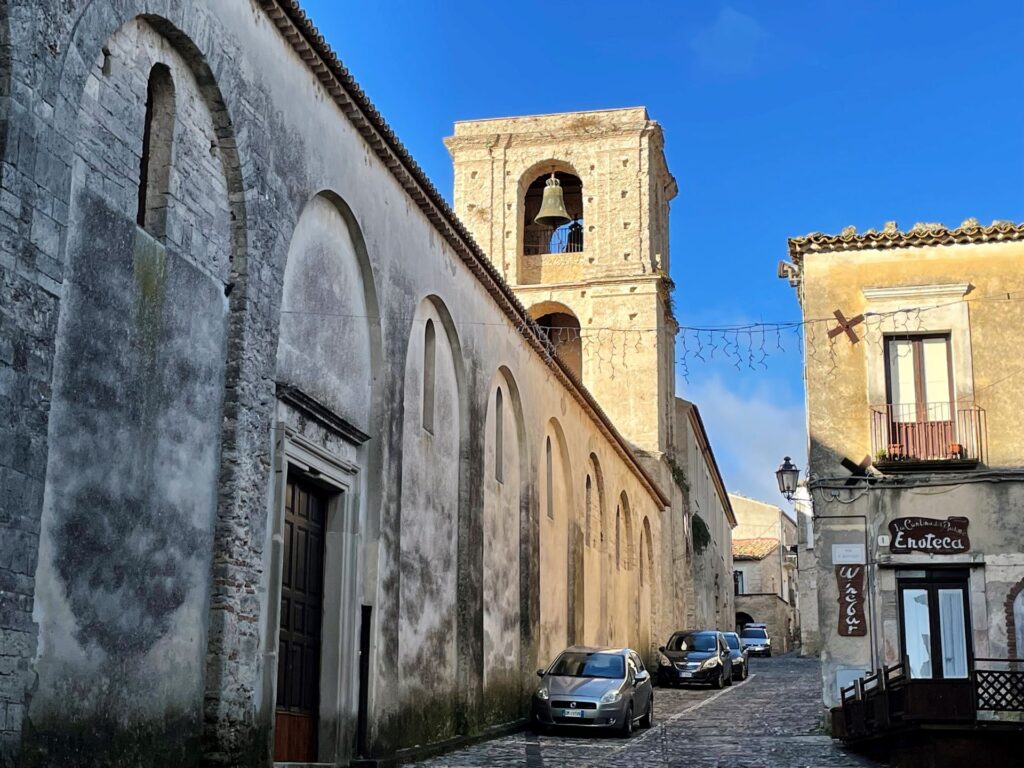
We arrived in the morning and there was plenty of space at the big parking lot near the old town. But I can imagine how it looks like in summer!
Next to the parking lot we saw the ruins of the ancient Norman Castle, Gerace’s main attraction (see photo 1). Although the exact time of construction is not known, it is estimated that the castle must have been built around the 10th century. It is located at the highest point of the town, on top of a tuff rock that consists of 60 million years old sea fossils. Over the centuries, it has been renovated and expanded several times – a lot of it was destroyed by the earthquake in 1783.
It was really a nice experience to take a walk through the medieval town center, well preserved over the centuries and characterized by very narrow lanes and streets. It is interesting to know that the Byzantine urban structure has been maintained.
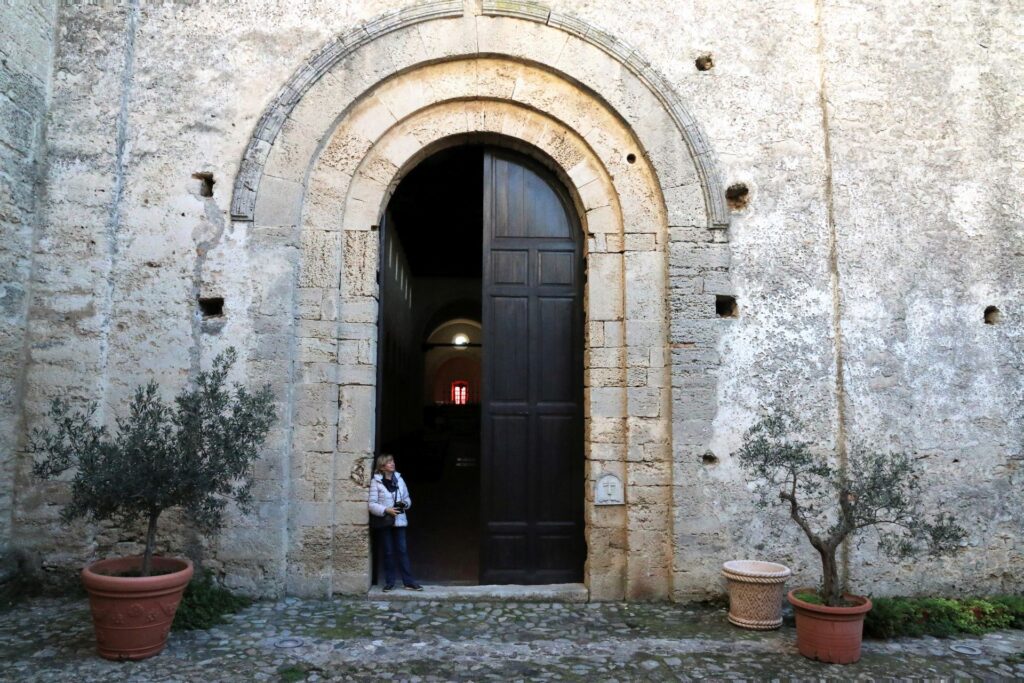
First of all, we visited the Norman Cathedral, being Calabria’s largest Romanesque cathedral. Dating back to 1045, the single nave and two aisles are divided by 13 different columns which have been brought here from ancient temples in nearby Locri. The building includes the Prison of the Five Martyrs, which dates back to the 11th century, a crypt and a museum. The simple and austere interior was a pleasant surprise for us after all Renaissance and Baroque churches we visited in Southern Italy!
The “Piazza delle Tre Chiese” (Square of the Three Churches) appeared to be another unique spot, with ancient churches at three sides of the square.
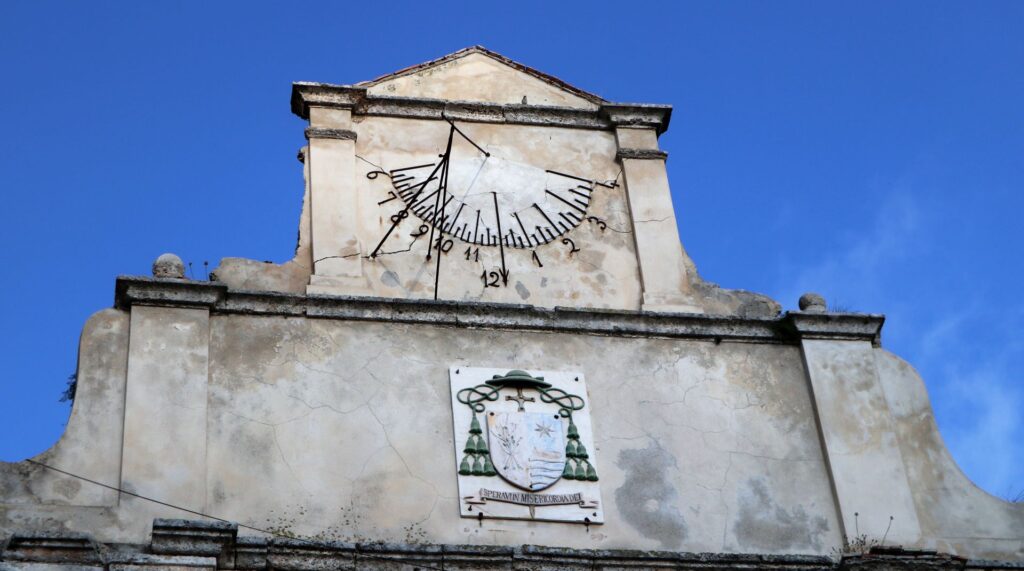
Among the beautiful palaces and other structures, we especially admired the old sun clock above one of the entrance gates.
Gerace is absolutely worth a visit – but I would recommend off-season, when you don’t have to elbow your way through the crowds and when you will not pay 20 euros for a coffee on the main square…
SCILLA
Scilla is an enchanting coastal village on the west coast of Calabria – it is also called the jewel of the Costa Viola (Violet Coast). Its position on the Strait of Messina, the stretch of water which connects Calabria to Sicily, offers a rich history with over 2,000 years old traditions in fishing for sword fish.
Scilla has a population of around 5,000 inhabitants. It is a town straight out of myths. Ancient Greek legends say that it was home to the sea monster Scylla, one of the two monsters (alongside Charybdis) who guarded the Strait of Messina and terrorized Odysseus as he sailed the seas.
During the summer months, the town is crowded with tourists, especially the beach front. But in this time of the year, we had the place all for ourselves.
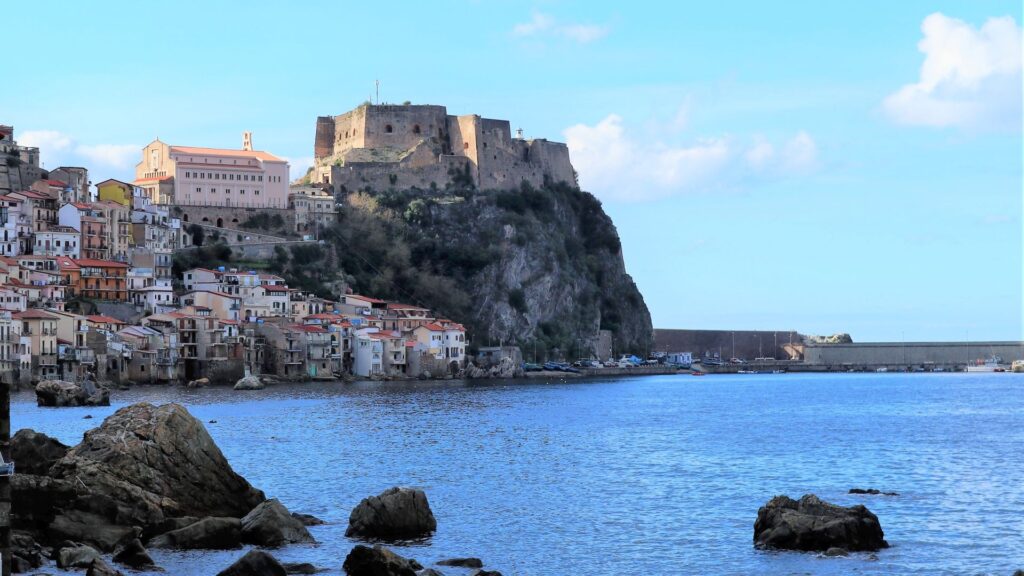
We particularly enjoyed the part around the harbor Marina Grande with the Castello Ruffo on a high cliff. The first castle built on this site dates back to the 5th century BC. Clashes with pirates and sieges followed through the centuries and the structure was demolished and restored many times. Paolo Ruffo, the local count, took over Scilla in 1532 and converted the castle into a residential property, where he spent the next few years.
In more recent history, the structure has been used as apartments by state officials. Now it remains an important cultural center for the town, hosting meetings and exhibitions, and restored for visitors to appreciate.
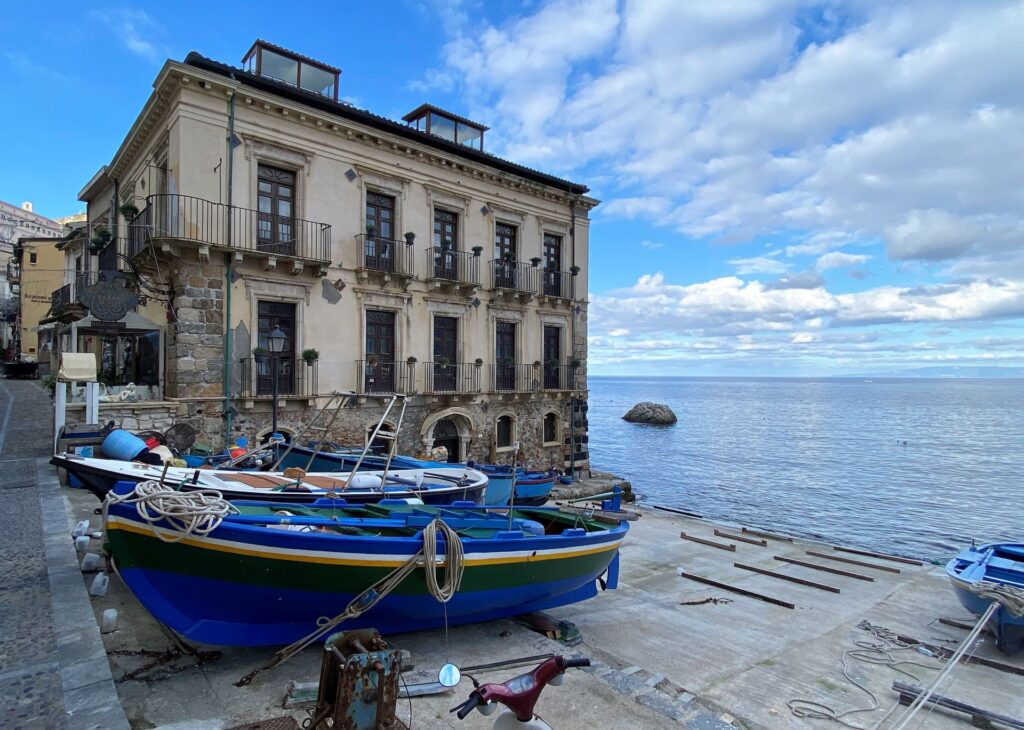
But the most interesting part of the town is Chianalea, the tiny fishermen village where the authentic Scilla can be experienced. Around 350 local fishermen live here with their families and the village is characterized by narrow streets lined with small and charming houses, built right up to the seafront. Cobbled walkways and tiny slipways for fishing boats run straight into the water, with waves lapping against the walls of the houses.
We walked through the picturesque main street that runs in parallel to the seafront. Glimpses of the sea were visible down each slipway, doors and windows were framed by flowerpots and wash hanging from balconies. Some pubs and shops were open to guests, small restaurants invited us to taste a sword fish sandwich.
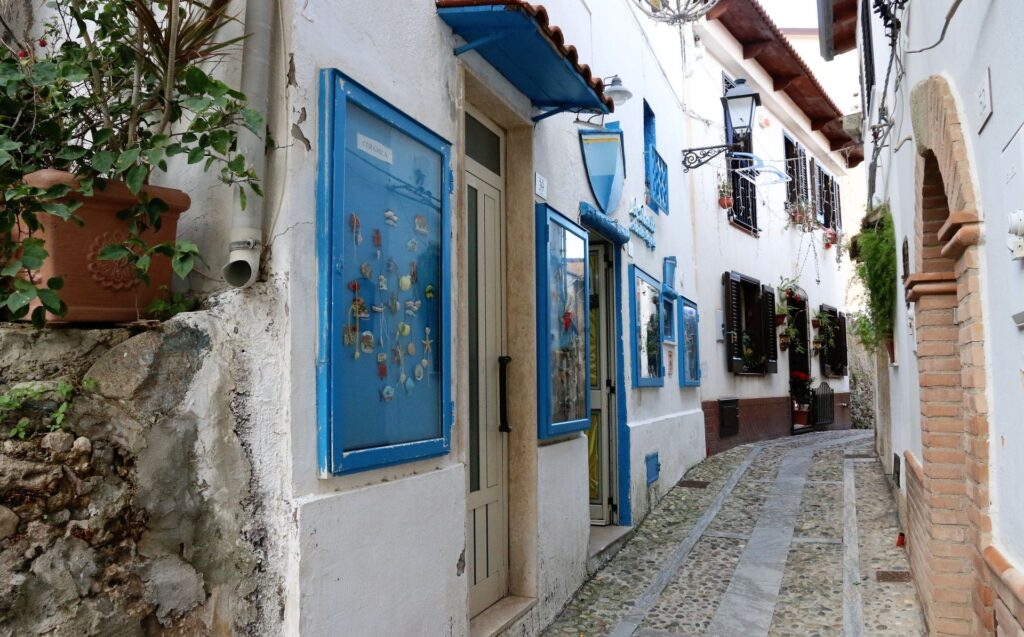
Why sword fish? Well, there has been a tradition of sword fishing in Messina and along this stretch of the coast (including Scilla), going back over two thousand years. This is the place where the fishes swim (often in pairs) through the strong currents. Sword fishes are known as the “Emperors of the Straits”, they weigh about 100 kilos and are around two meters long.
PIZZO CALABRO
Historically, Pizzo was most known for its coral and tuna fishing. In the early summer months, the tuna would swim right up to the beach, and ‘tonnare’ static nets were used to herd and trap the fish.
The town is home to roughly 9,000 residents, with the area of the historical center sitting 50 meters above sea level. Perched on a clifftop and overlooking the sea, this part of the town is a charming maze of lanes, magnificent churches and old pastel-colored houses, built around the central square, Piazza della Repubblica.
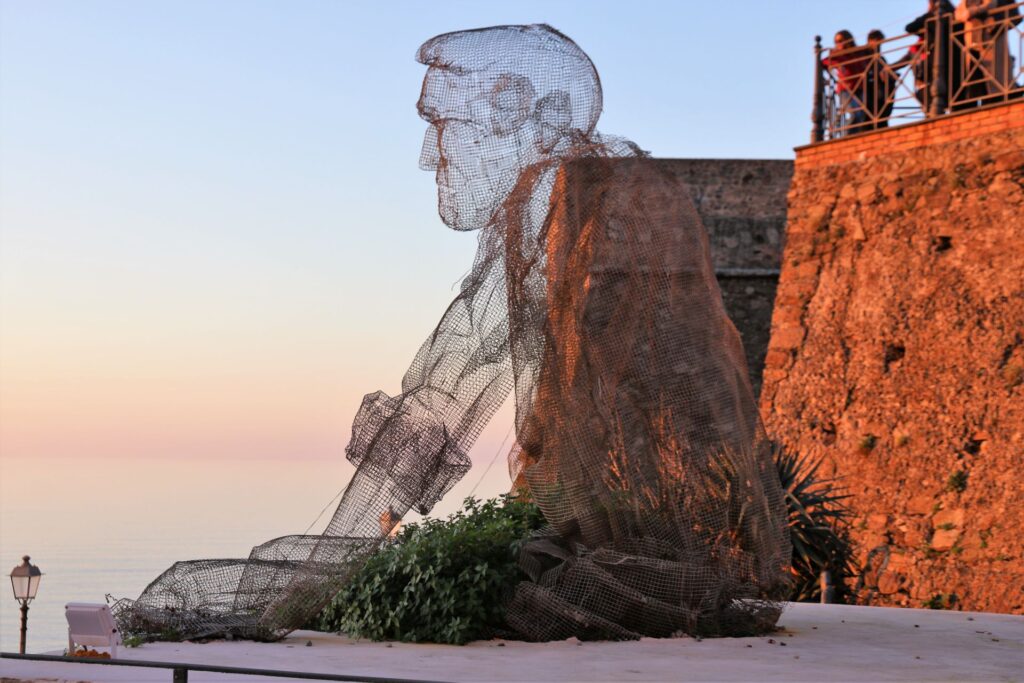
It was quite a job to get up the hill by foot, as the streets were rather steep. But finally we arrived at the viewpoint named “Spuntini”, dominated by a huge wire figure called “Il Collezionista di Venti” (the Collector of Winds).
The central square was filled with outdoor tables from “gelaterias” and restaurants. Pizzo is also known as the “City of Ice Cream”, so we could not leave the town without tasting the famous “Tartufo di Pizzo”. And yes, it was delicious!
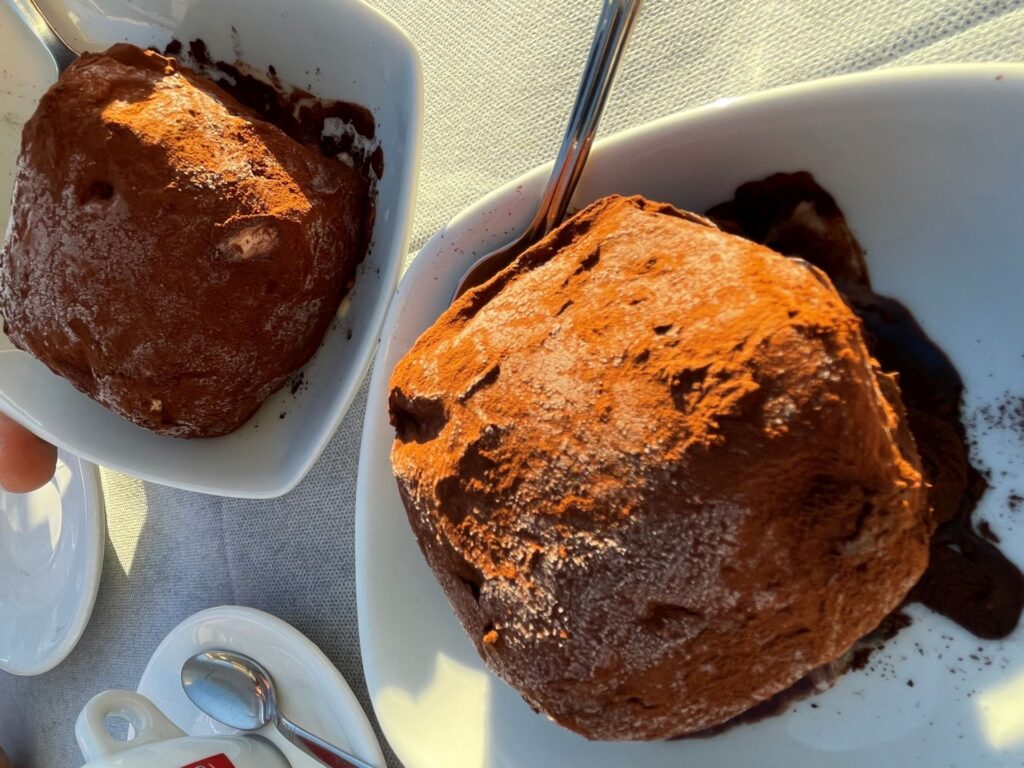
Why is this ice cream so famous? Legend says that it was invented in 1952. Many experts were crafting ice cream in the town before then, but it was this invention by a “gelataio” named Giuseppe De Maria (known as Don Pippo) that really put Pizzo on the map. The story goes that he was serving guests at a feast to celebrate the arrival of a wealthy prince, when he ran out of molds to shape the desserts. He began to shape them instead with his hands, molding the ice cream with his palms into a rough ball, filling the center with a sauce and dusting in sugar and cocoa.
The original recipe still belongs to Don Pippo’s nephews, who now run the neighboring gelaterias Ercole and Dante in the town’s piazza. It consists of a layered ball of hazelnut and chocolate ice cream about the size of your fist, filled with a molten chocolate center and rolled in a dusting of cocoa powder and it can be found on every ice cream parlor’s menu. And of course, thousands of them are shipped around Italy every year.
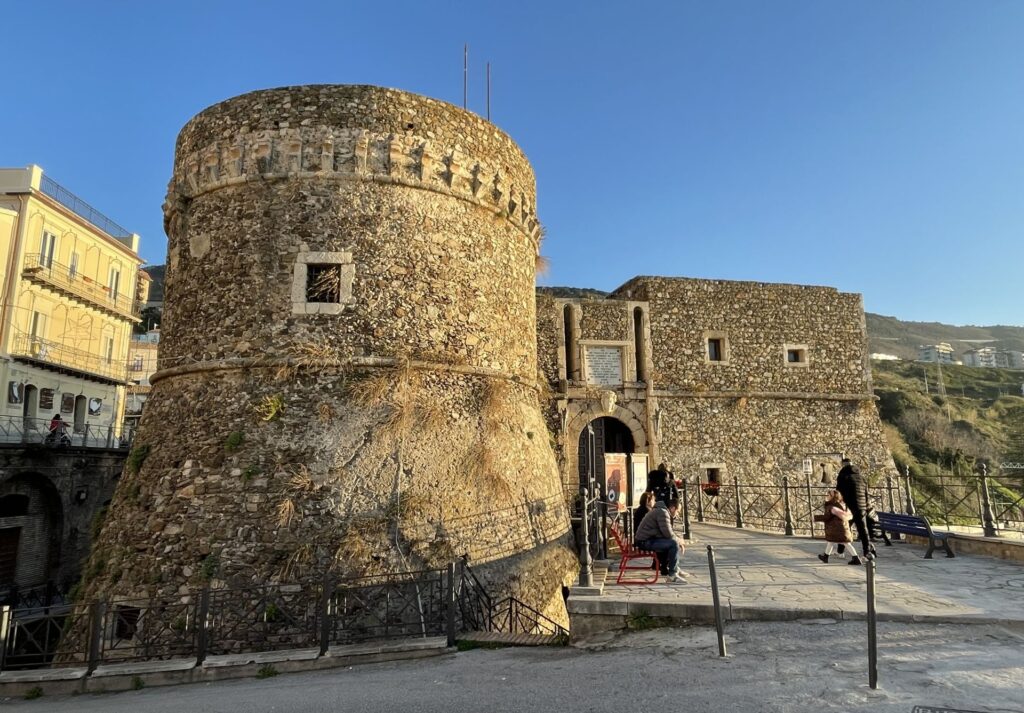
We also visited the Castello Aragonese or the Fortress of Murat. This 15th century fortress is named after Joachim Murat, brother-in-law of Napoleon Bonaparte and briefly King of Naples before his capture and execution for treason in 1815.
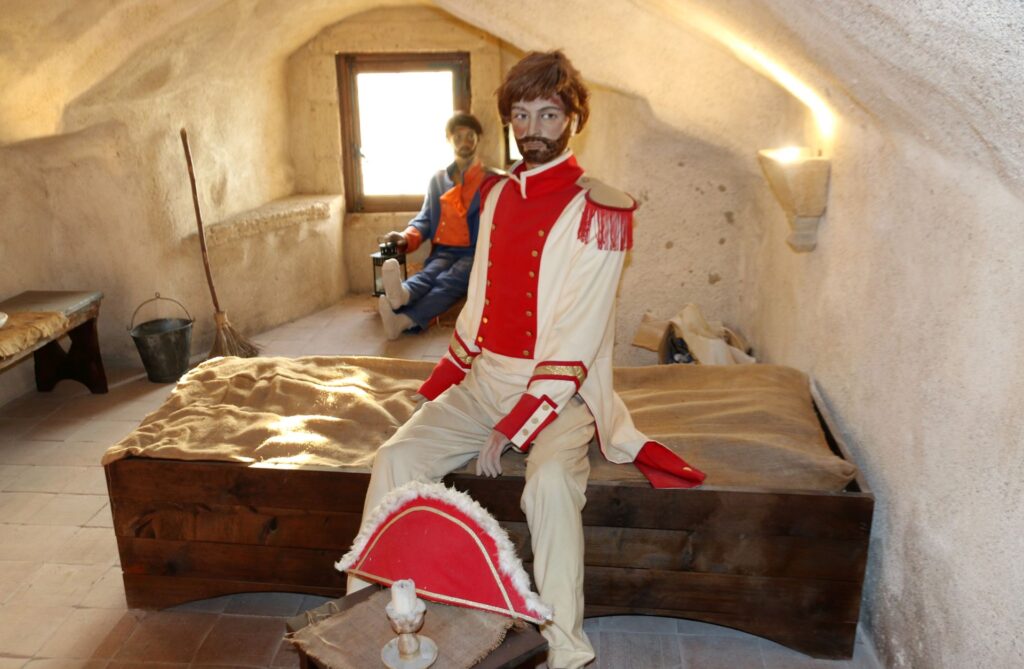
The largest tower of the castle was built in the 14th century, as a defense against the Saracens. About 100 years later, the rest of the structure was added, with a watchtower looking over the marina. The castle/museum is not large, but worth a visit and the 3 euros entrance fee for the impressive vista from the terrace. Inside we discovered the story of Murat and his imprisonment and then death by a firing squad – all this depicted in an original way.
Later that afternoon we took the pathway that winds down from the central „piazza“. We enjoyed our walk along the beach, where many locals were basking in the sun. And together with the impressive figure called „Wind Collector“, we enjoyed a wonderful sunset.

Calabria, the toe of Italy’s boot is a wonderful region with stunning landscapes and amazing cities, towns and villages. The locals are warm and welcoming (although English is rarely spoken) – they are very proud of their region. Moreover, the climate is warm and sunny, there are a lot of sandy beaches, and – what’s most important – Calabria has been untouched by mass tourism (except for the month of August)!
In this blog post I have only mentioned some of the must-see destinations. Other interesting places are: Tropea, Cosenza, Catanzaro, Badolato, Stilo … and don’t miss the national parks of Aspromonte, Pollino and Sila with their lakes and untouched nature. Have a good trip!
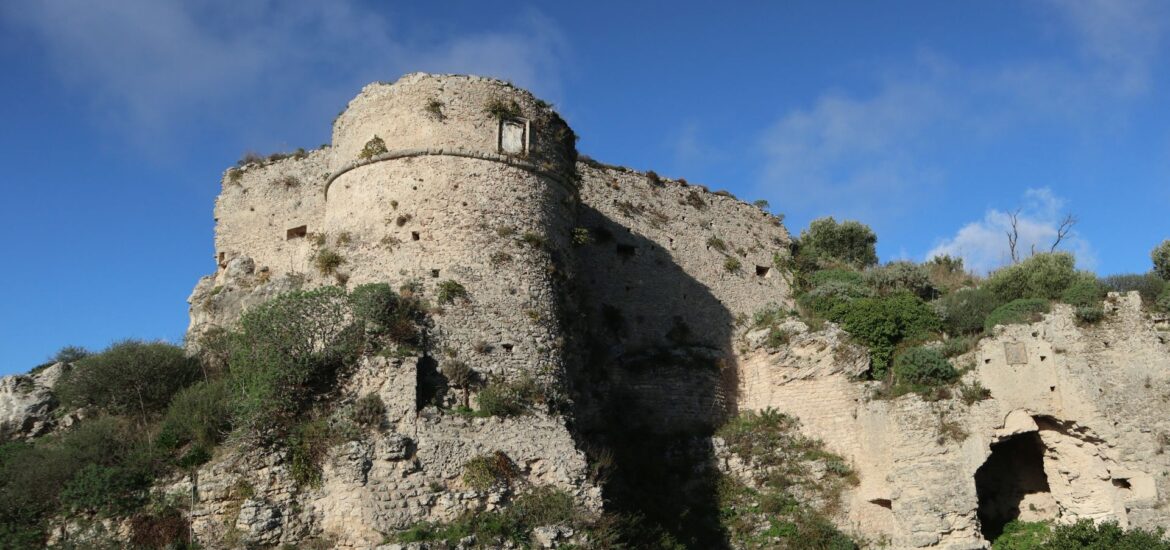
Hi, you need around two weeks for this trip. Take the ferry from Durres to Bari, then you need one day to get to Sicily. I think that 10-12 days is enough to explore the island. All the best, Marianne
Loved your post on traveling through Calabria. We, too, were in southern Italy this winter. By the time we got there in January it was pretty cold. We went to escape the cold of Montenegro-Nikšić-for a couple months and traveled through Sicily as well. Looking forward to your next post on Sicily. We are back in Nikšić, it is warming up! I have enjoyed your blog for a couple years now, thank you for sharing your travels. Julie